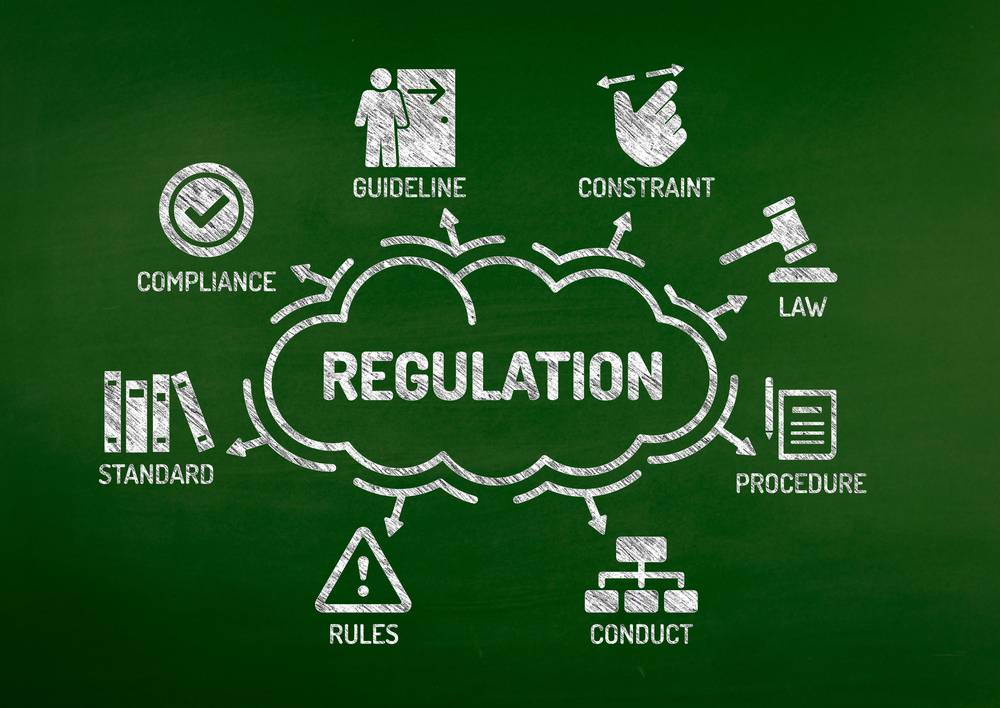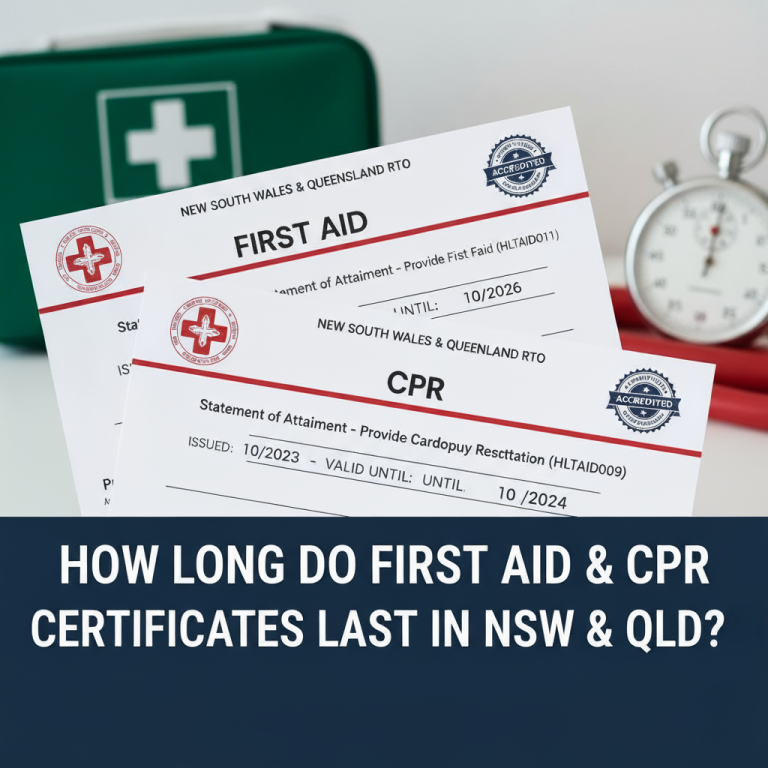Training and Assessment Delivered on Behalf of Allens Training Pty Ltd RTO 90909
A Toowoomba Business Owner’s Guide to Workplace First Aid Training Compliance
Keeping your workplace safe makes good business sense. When a worker understands that safety is integral to their role, no matter what they do, they are happier, more productive and stay with you for longer.
As a business owner, it can be challenging to determine which types of training get the best bang for the buck. Take first aid training, for example. It’s a simple fact that every workplace needs first aiders. But How many is the right amount? How do we determine if our workplace is first aid training compliant? What factors do we need to consider? Is there a tool that can help us make the right decision?
In this post, we’ll be looking at the answer to these questions and more. By the end of this article, you’ll know what you need to do to ensure you meet your workplace first aid training requirements.
Understanding Your First Aid Training Obligations
Note: In this article you will see the term PCBU. This is short for Person Conducting a Business or Undertaking, which is a legal term. At the risk of upsetting a few lawyers, a simple way of thinking about this is “who is ultimately responsible for how the business is run?”. This is usually the person with management or control of the workplace. It is absolutely more complicated than this, but if the buck stops with you, then the responsibilities of the PCBU are probably your responsibilities.
Like most things safety related, First Aid training in Queensland is part of a workplace obligation under the Workplace Health and Safety Act and it regulations. The regulations clearly spell out what you need to do. Key factors are that as a PCBU you must:
- Ensure the provision of first aid equipment, including that each worker can access the equipment and has a suitable place to use it.
- Ensure there is an adequate number of trained first aiders and that each worker has access to them while working
- Consider all relevant factors that affect the first two points. (More on that later)
The act and the regulations deliberately don’t provide a lot of detail on how this should be done, because they need to cover a wide range of workplaces, from Audiologists to Zookeepers. If only there was a more detailed tool to help work out what our requirements are!

But wait there is!
The Queensland First Aid Code of Practice was written for just that purpose. It can help you make the right calls when working out your first aid needs. This is designed to help any workplace determine what they need. Today we are going to focus just on training, but it also covers every other aspect of first aid in the workplace.
It outlines a 5-step process for coming up with the best answers. The full details are found in section 3.5. Here’s a summary of those steps:
- Identify the maximum number of workers at one time
- What kind of work is being done? Is there a high risk of injury needing first aid treatment?
- Is the workplace remote or is access to emergency services difficult?
- How do your workers work? Alone? Lots of travelling? How much supervision do they have?
- Consider any other factors, such as shift work, seasonal workers, large numbers of visitors.
Once you’ve looked at these factors, you can determine the needs of your workplace.
As a minimum most workplaces will need two first aiders, even if they are low risk. Why? Even though the recommended ratio for low-risk workplaces is one first aider for every 50 workers, having two people trained is common sense to cover times such as when a first aider is sick, on leave or gets injured. I’ve yet to see anyone who can do CPR on themselves!
A closer look at the factors to consider for workplace first aid training compliance
The code of practice mentions several factors that need to be considered when assessing the risk in your workplace. Let’s take a look at some of the questions you should ask to see if these factors increase the risk level in your workplaces.
A remote or Isolated workplace
The Code has the following definition for a remote workplace:
Remote or isolated work is work that is isolated from the assistance of other people because of the location, time or nature of the work being done. Assistance from other people includes rescue, medical assistance and emergency services.
Does your workplace have anything that would isolate you from getting assistance? This doesn’t just apply to workplaces in the outback. For example, a factory may have hygiene or quarantine processes that mean it can take additional time for people to exit the building. Even a workplace in the city could be “remote” if it takes 10-15 minutes to get from the front gate to the site of an incident.
Workers who spend most of their time working alone or travelling
This can include personal care workers (aged care or NDIS), delivery drivers, sales reps for truck drivers. The Code has this to say regarding workers who work this way:
In these situations it may not be practicable to have a first aider available at all times at the workplace. However, these workers must be able to access first aid assistance, for example by ensuring they are provided with:
• an effective means of accessing emergency services or first aiders
• information, instruction and training on how to respond if a serious injury or illness occurs.
Thinking about that second point, many workplaces make the decision that all workers who spend a large amount of time alone or driving should be first aid trained

Workplaces with large numbers of visitors
The code highlights this as a factor to consider but doesn’t provide specific guidance on how to take this into account when determining your first aid training compliance. Some factors that may affect your decision on how many workers to training in first aid would include:
- Visitors are less familiar with where things are in the workplace, and may have additional challenges accessing first aid assistance
- Depending on the nature of your workplace, you may have visitors who are more likely to need assistance than your regular workforce. This could include older people, people with disabilities or groups of children
- Visitors may be less aware of the workplace hazards and less likely to understand workplace safety instructions. This may increase the likelihood of serious injury
There is no one size fits all answer to this, but it’s important that you consult with your workers and see how well prepared they feel they are to respond if a visitor is involved in an incident.
High risk work or Unique hazards
The code defines a High-risk workplace as follows:
A workplace where workers are exposed to hazards that could result in serious injury or illness and would require first aid. Examples of workplaces that may be considered high risk are ones in which workers:
- use hazardous machinery, for example mobile plant, chainsaws, power presses and lathes
- use hazardous substances, for example chemical manufacture, laboratories, horticulture, petrol stations and food manufacturing
- are at risk of falls that could result in serious injury, for example construction and stevedoring
- carry out hazardous forms of work, for example, working in confined spaces, welding, demolition, electrical work and abrasive blasting
- are exposed to the risk of physical violence, for example working alone at night, cash handling or having customers who are frequently physically aggressive, or
- work in or around extreme heat or cold, for example, foundries and prolonged outdoor work in extreme temperatures.
As you can see there are a lot of factors that can make a workplace high risk. If this applies you your workplace, you should have a higher number of your staff trained. While the minimum in the code for a high-risk workplace is 1 first aider for every 10 staff, many workplaces choose to train more people. This is often done to ensure that every possible combination of staff, has a first aider, every time. Doing so is beneficial in case of any fair work claims.
Summary
As we’ve seen in this post, the First Aid Code of Practice provides the best guidance for determining First Aid training compliance with your WHS obligations. However, as the code make clear, it’s not a simple tick the box exercise.
Sometimes we need help to get the right answer. Accidental Health and Safety Toowomba can assist you in assessing the risk in your workplace and working out the best plan for your needs.
Key takeaways for first aid training compliance are:
- The Queensland First Aid in the Workplace Code of Practice is the foundation tool for determining your first aid training compliance, along with your other workplace first aid needs.
- Every PCBU needs to use the code to look at their circumstances to ensure they are protecting their workers appropriately.
- Most workplaces should have a minimum of two first aid trained people
- Sending your staff to a quality first aid course can and will make your workplace safer.
We hold weekly first aid training courses at the Toowoomba Choral Society Building, Raff Street. There we teach worker from a range of different industries to respond effectively to first aid emergencies in the workplace.
Click here to find a course that suit your needs. You can also contact us and we can help you work out your workplace first aid needs.


